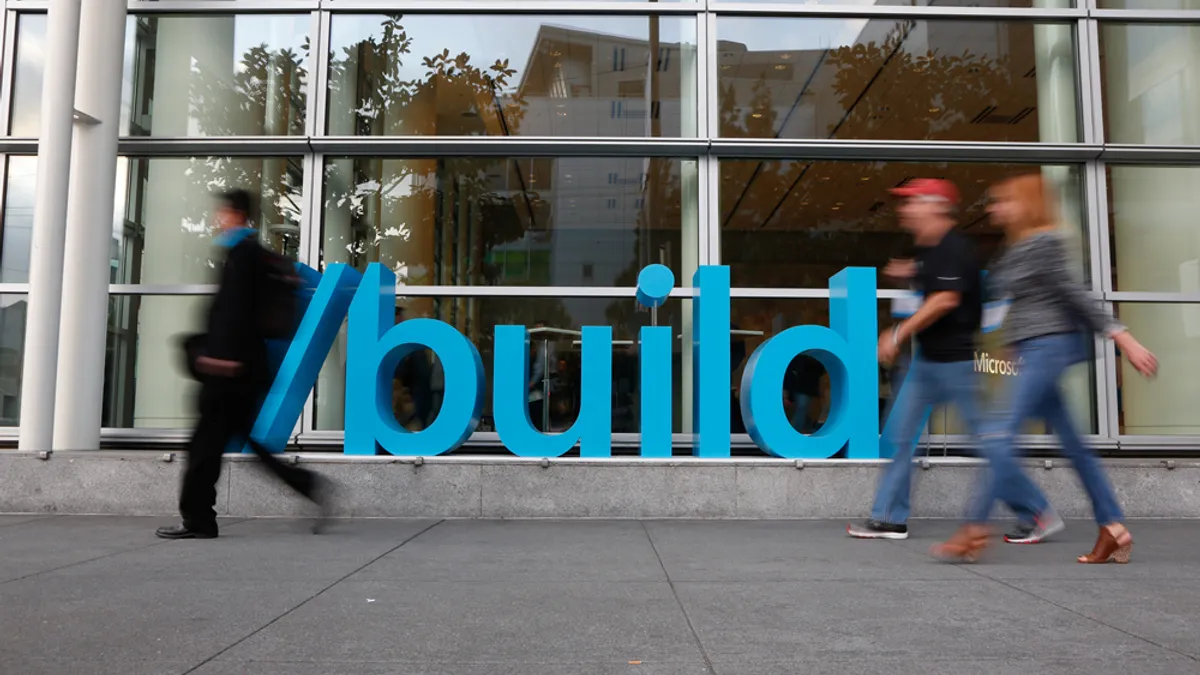On Wednesday, Microsoft made a slew of announcements about new technology capabilities and company milestones at Build 2016 in San Francisco. Microsoft's developer event is the company’s platform to unveil what is new and exciting in what it calls the “cloud-first, mobile-first world.” Though the conference runs through Friday, Microsoft’s leadership used Wednesday’s keynote to show off what the company has been working on.
Below are five of the announcements Microsoft made.
Windows 10 now runs on 270 million devices
Windows 10 had the fastest deployment in Microsoft’s history and is now running on more than 270 million active devices eight months after its launch, the company announced.
Microsoft has pushed users to upgrade to Windows 10, which was released as a free download in July. By the start of January, the operating system was running on 200 million devices, with growing adoption from enterprise customers, the company said. At the time, three-quarters of the company’s enterprise customers were testing Windows 10. The U.S. Department of Defense is also moving to “rapidly” adopt the operating system and plans to have its 4 million machines running on Windows 10 by January 2017.
Windows 10 anniversary update to bring more security and a pen
This summer, as the one-year anniversary of Windows 10 approaches, Microsoft is rolling out a free update. It will include biometric security through Windows Hello for Apps and the company’s web browser, Microsoft Edge. Labeled as “enterprise-grade security,” users can use their face, fingerprint or iris recognition rather than typing in a password.
Also new with the update is Windows Ink, a pen for users to write on devices so people can share their “analog thoughts in the digital world.” Basically, Microsoft added more stylus functions to Windows, a move that Apple made with its introduction of the Apple Pencil in September 2015. Microsoft’s stylus is integrated directly into apps and developers can use short lines of code to program it into their newly developed apps.
Ubuntu is coming to Windows
Responding to developers’ annoyance that that it was difficult to use open-source tools on Windows, Microsoft added Bash to its command line and support for Linux command-line tools. So, developers can now run Bash on Ubuntu on Windows. Microsoft incorporated the command-line tools into a Windows environment that operates in a Linux-like fashion. The new Windows Subsystem for Linux (WSL) runs a genuine Ubuntu user-mode, according to Microsoft’s announcement.
Recently, Microsoft has made a series of moves that have stunned the development community, like announcing it is making SQL Server for Linux. Microsoft's relationship with the Linux and open-source communities has historically been rocky. Former Microsoft CEO Steve Ballmer once compared Linux to "communism" and a "cancer." In the past few years, Microsoft has become much more willing to work with open source vendors and rival companies. But Microsoft is opening up to the open source computer operating system in an effort to attract more large business customers, potentially appealing to customers that employ more than one operating system.
Cortana and intelligent machines
Microsoft boosted intelligent personal assistant Cortana’s capabilities through its new Cortana Intelligence Suite, formerly known as the Cortana Analytics Suite. The company added a collection of intelligence APIs through its new Microsoft Cognitive services, designed to allow systems to understand natural language. The company also showed of its Microsoft Bot Framework, which allowed developers to build intelligent bots programmed in any language, allowing customers to “chat” with the bots using intelligent language (see more on this below).
The Intelligence Suite runs on Microsoft Azure, tapping into Big Data, machine learning and advanced analytics. Microsoft is working to allow developers full access to its tools to developer new intelligent solutions
Bots on Bots
Microsoft’s recent foray into bots didn’t go so well. Tay, its teen chatbot available over Twitter, Kik and GroupMe, was supposed to mimic conversations of a 19-year-old-woman. But, the Internet had its fun. Rather than learning natural teen language, the machine learning chatbot, like, totally, turned into a racist and was majorly abusive (omg!).
But Microsoft will not be deterred. On Wednesday, Microsoft previewed how people could interact with its chatbots. With their conversational interface, Microsoft demonstrated how a chatbot could replace standard online ordering forms. For example, a chatbot could help you order a pizza without the nuisance of dropdown toppings options. Instead, the user can just tell the bot what they want.
Microsoft is also opening up bots to developers through its Microsoft Bot Framework. "We want every developer to be able to build bots as the new application for every business and every service," said Microsoft CEO Satya Nadella. "We want all developers to be able to infuse intelligence into their applications."
Developers can create chatbots that work across platforms, from Skype to Slack to the web, according to The Verge.






















